Chinese premium EV brand Nio has launched a third generation of its innovative Power Swap Stations, which can now replace the power pack in one of its models in under five minutes – and they are bound for the UK.
The first examples of the reworked stations have gone live in China and the firm has begun producing them for the European market at a new production plant in Hungary.
Nio now has more than 1300 Power Swap Stations in service in its home nation and has completed more than 20 million swaps. In Europe, Nio has launched in Norway, the Netherlands and Germany, and it has 13 stations live across those markets, with more than 12,000 swaps completed.
The firm claims that more than 56% of ‘charging’ for Nio models comes from battery swaps. All of Nio’s models are capable of battery swapping and the stations are able to remove the battery from underneath the EV floor and replace it with a fully charged unit. The first Power Swap Station was launched in 2017, with the second-generation version arriving in 2021.
The third-gen station is a minute faster than the second iteration, with a swap taking around 4min 40sec. The actual mechanical process happens in around 2min 30sec and the rest of the time is taken up by safety checks and vehicle positioning. The new station can store 21 batteries, compared with 13 for the second-gen unit and just five for the original.
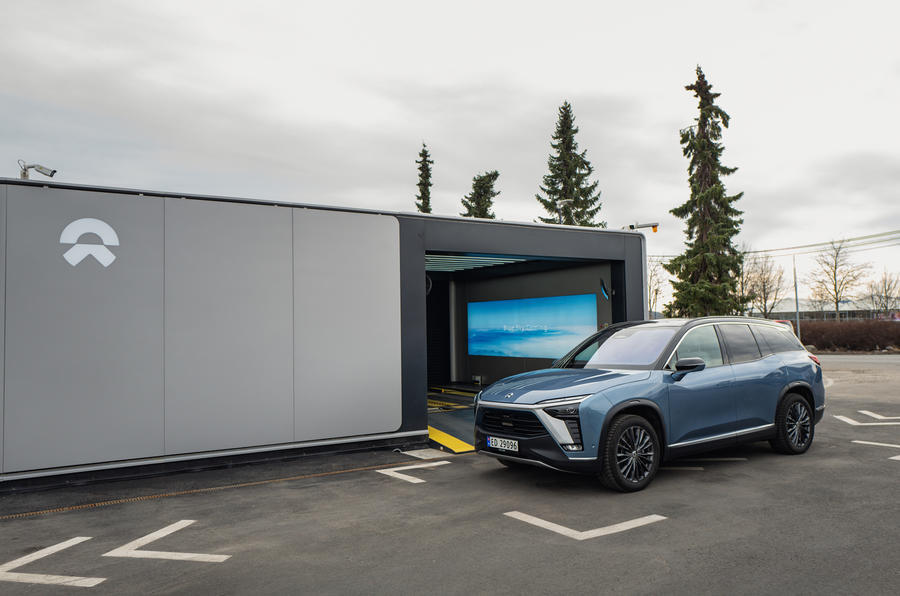
That enables more swaps to be completed per day. The record for a second-gen station is 171, but Nio Power boss Fei Shen claims the new unit can handle over 400 swaps per day.
He also said the stations can help to balance energy grids. The batteries can be charged at times of low demand, when energy is cheaper, and there is the potential for them to be used for grid balancing at peak times. All of the Power Swap Stations feature a number of conventional EV chargers, which are available to all EV drivers and can take energy from the stored batteries at times of peak demand.
In China, the battery swap sites are open to Nio drivers who own their batteries outright or who lease them. In Europe, only drivers who opt for the ‘Battery as a Service’ (BaaS) system – a lease-style package separate from the cost of the car – are able to use the swap stations.
Beyond those included in BaaS packages, Shen says the cost of a battery swap is “comparable with a Supercharger”, with the benefit being that it is substantially quicker. He added: “Two big concerns of EV owners are range anxiety and about the cost and lifespan of batteries. Battery swapping addresses both of those concerns.”
The system is compatible with all of Nio’s batteries – 70kWh, 75kWh, 100kWh – and drivers who own or lease a smaller battery can use the stations to upgrade to the larger unit when they need to make long journeys.
Nio is currently putting the finishing touches to its plans to enter the UK and its market launch – including cars and battery swap stations – is due to take place next year.
Shen admits that the firm’s European Power Swap Station roll-out has been slower than expected due to the added complexity and approvals needed to secure locations compared with China. The Hungary plant can produce around 100 swap stations per year. The plan for the next year is to launch 1000 more stations in China and 70 more in Europe.
The manufacturers getting into battery swapping
Fisker
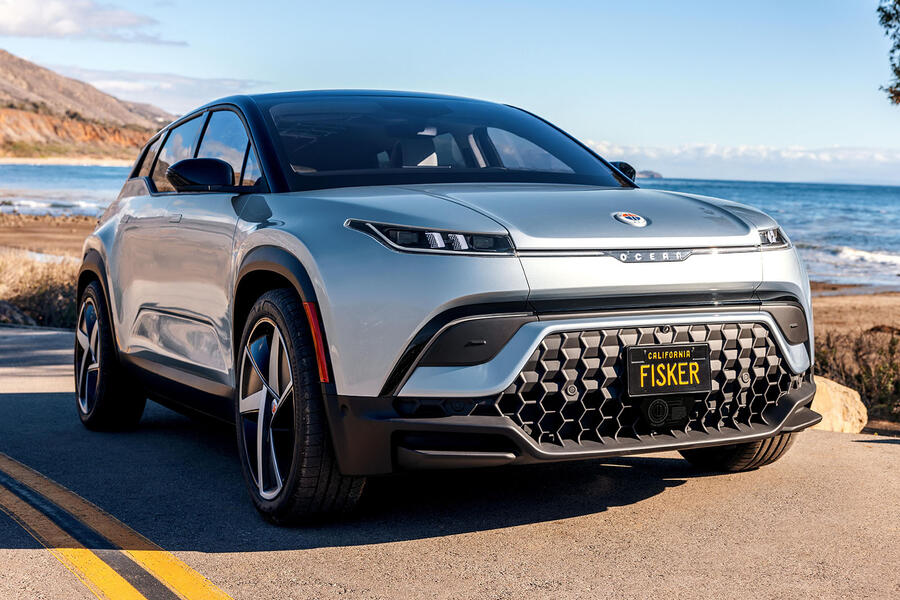
The forthcoming Fisker Ocean will feature swappable batteries from 2024 onwards through a new partnership with Ample. The energy management firm is developing a range of swap stations and plans to introduce them in the US and Europe.
Geely
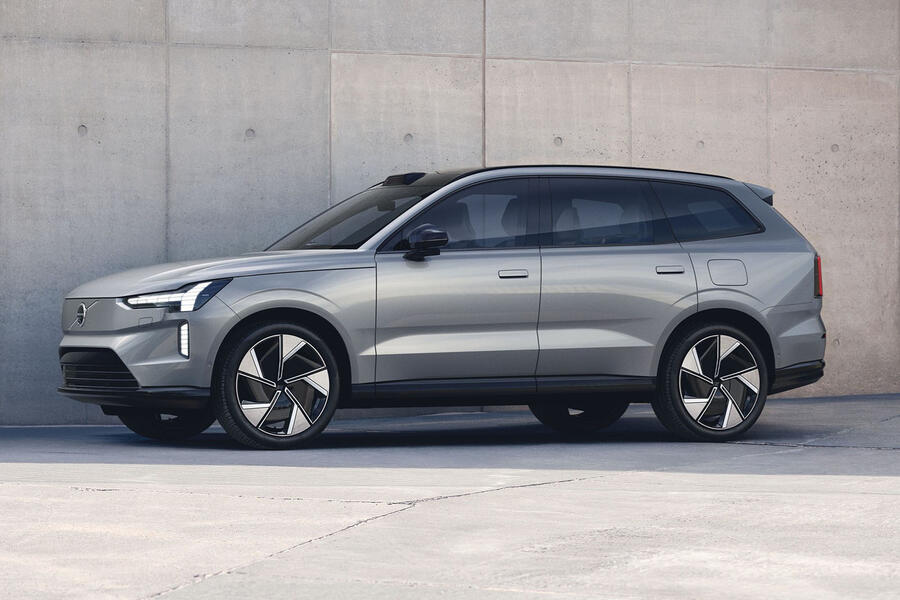
The parent of Volvo and Polestar has been working on battery swap technology for years, including a system for cement mixers. It recently launched a new brand called Cao Cao, which is building cars for ride-hailing with the technology
SAIC
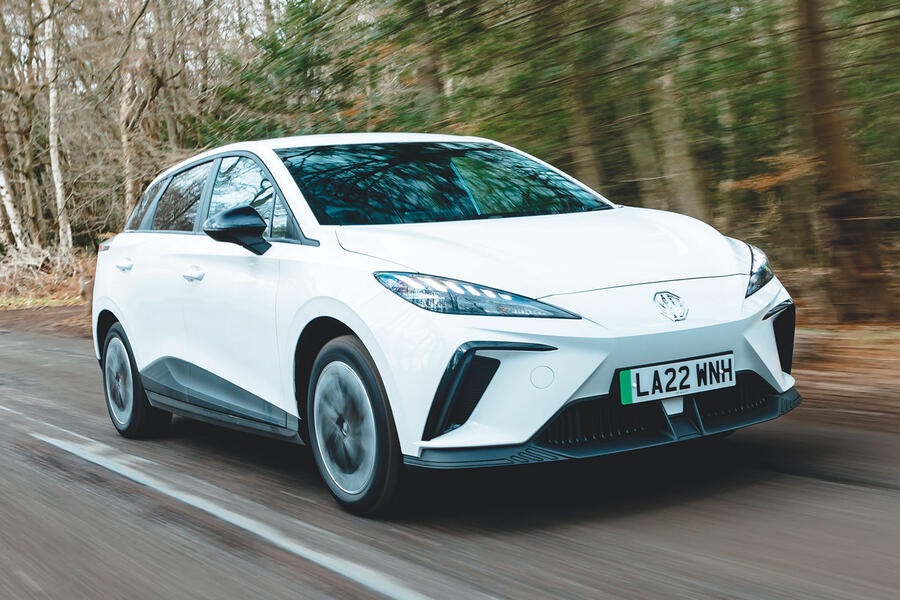
The prolific Chinese car maker is developing battery swap technology that will be used by a range of its brands. Nio rival Rising already offers the technology and notably there are plans to feature it on some future MG and Maxus vehicles.
CATL

The Chinese battery giant is developing its own battery swap system called Evogo, with the aim of finding customers to use its modular ‘choco SEB’ units.

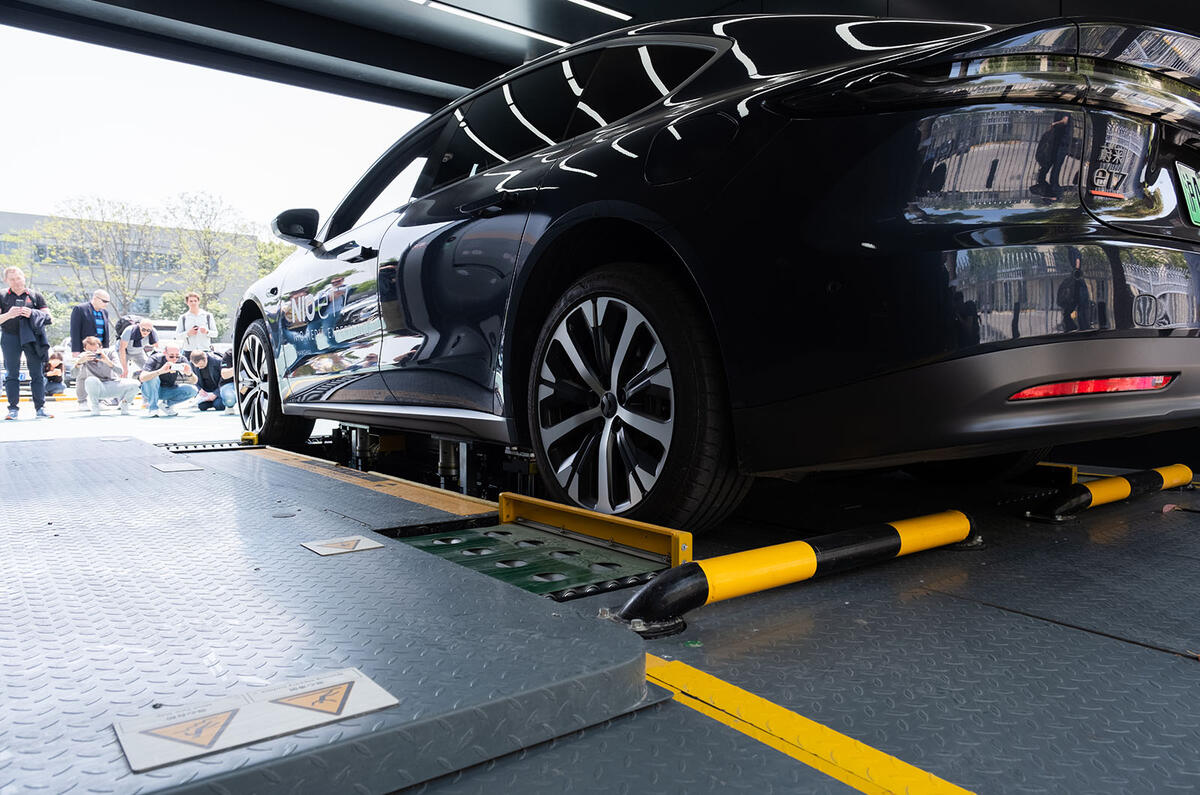
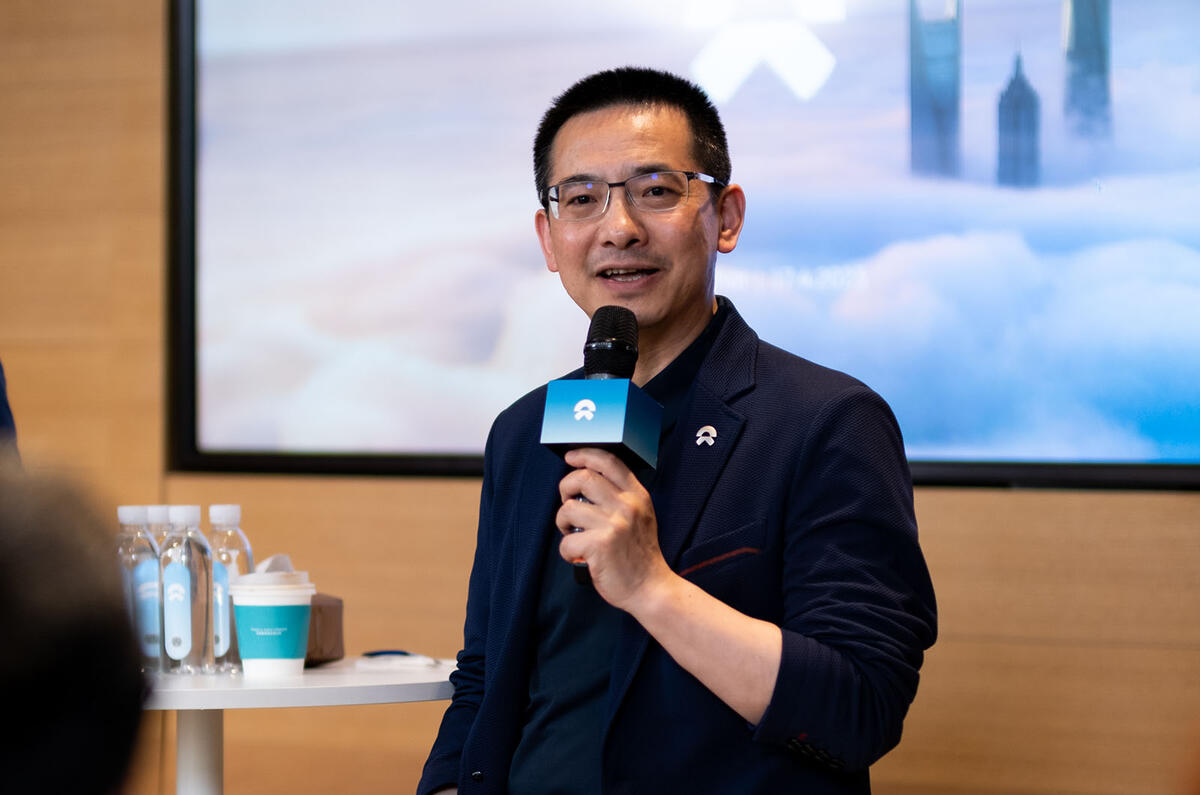
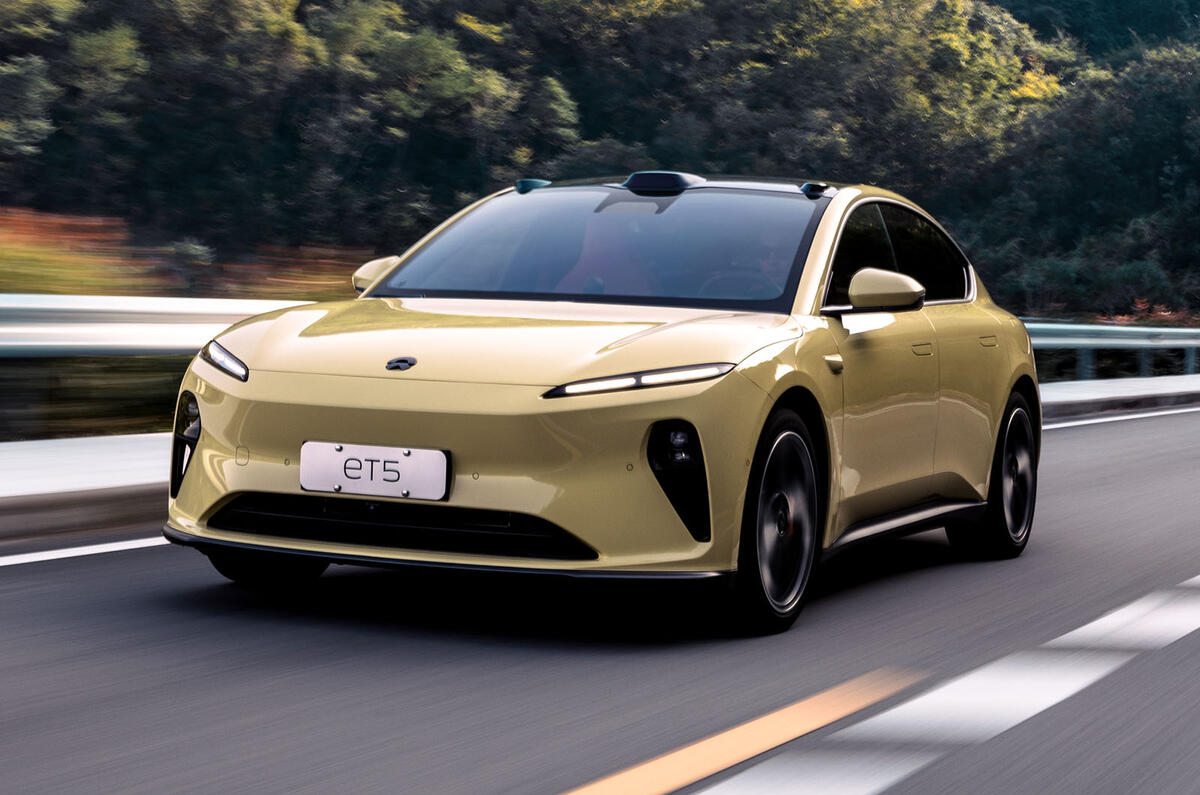
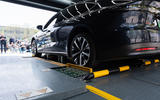

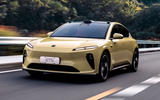






Join the debate
Add your comment
Will the replacement battery be covered by your cars original battery warranty? After all you could presumably end up driving around with a battery older than your car, and maybe less efficient than the one you had in the first place?
I will never buy anything Chinese. Especially if I know for sure it's made there. They cars probably have some tracking, hacking or search device built in. As soon as you hook up your phone, all your banking info is probably sent back to china and Russia too. WTF needs that. Not me. If the West has my info, no problem,but chins or russia. NFW.
Sit back, take a breath and then ask yourself, "is this seriously the future"? Obviously it is not, 20yrs from now it will look as redundant as the first Apple Mac's, the first Cellphones and that 70's computer game that bounced a dot backwards and forwards across a screen. I especially remember the latter because my parents bought one thinking it was cool and could not understand that I could not be bothered to play with it because it was so lame. When battery technology matures and cars can do 500 miles on one charge, charge in 30 minutes, and are affordable, that's the time to buy an EV. Until then, band-aids like this are just that, band-aids for a bad idea?